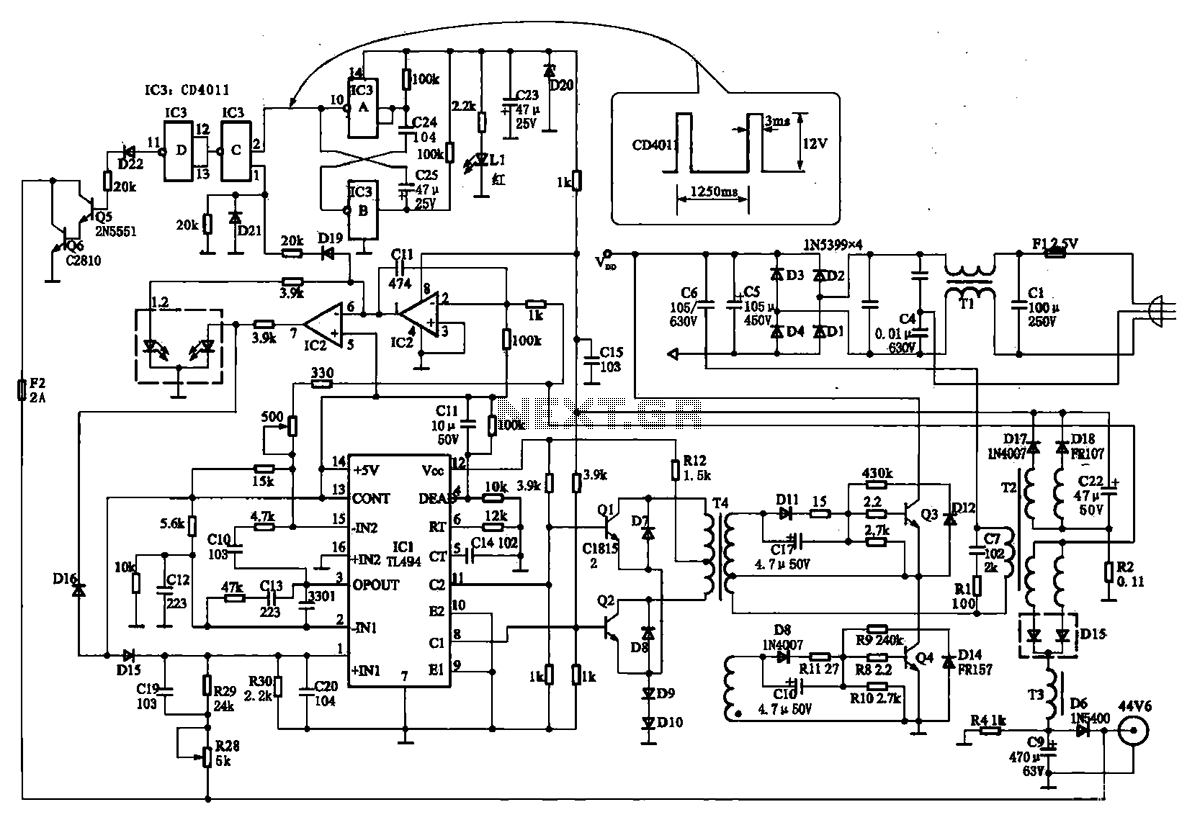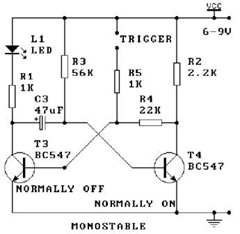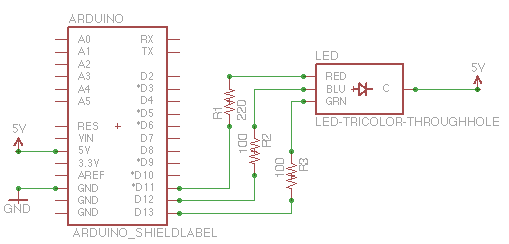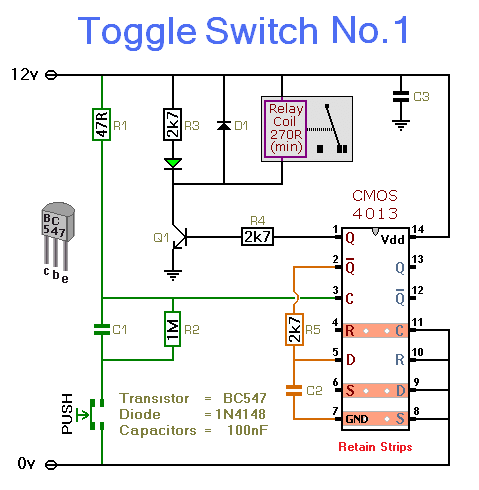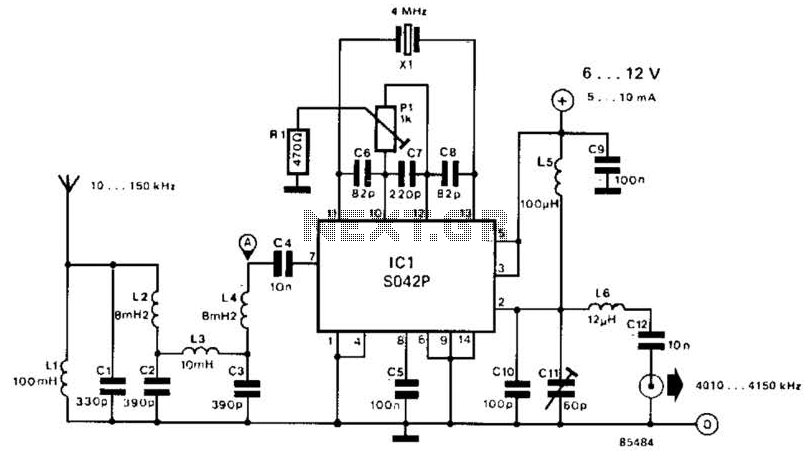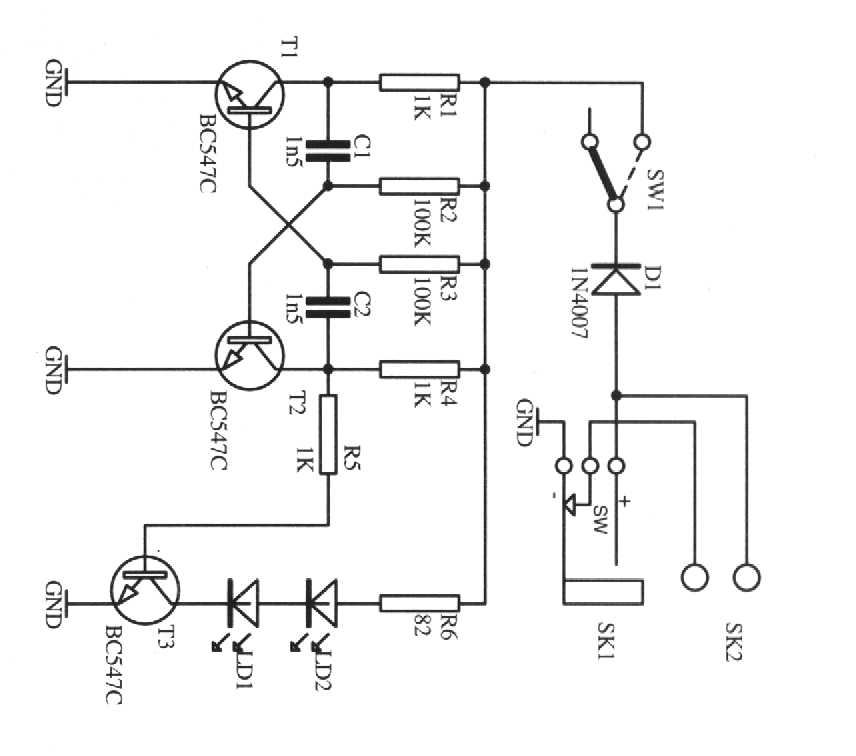
Parallel DC power supply circuit

A DC power supply with a shunt, rectifier, filter, current limiting, and voltage regulation, providing 10V voltage outputs. The circuit is simple and low cost, designed to meet the requirements of various applications. Additionally, it features a 3V indicator (EL1, EL2) that indicates the machine's running and stopping status through a relay control circuit.
The DC power supply circuit is designed to convert alternating current (AC) to direct current (DC) while ensuring stable voltage output and adequate current limiting for safe operation. The shunt resistor is integrated into the circuit to measure current flow, enabling real-time monitoring and protection against overcurrent conditions.
The rectifier section utilizes diodes arranged in a bridge configuration to efficiently convert the incoming AC voltage to pulsating DC. Following the rectifier, a filter capacitor smooths the output voltage, reducing ripple and providing a more stable DC voltage.
Voltage regulation is achieved through a linear voltage regulator or a switching regulator, ensuring that the output remains at a constant 10V, regardless of variations in input voltage or load conditions. Current limiting is incorporated to prevent damage to the circuit components and the load by restricting the maximum current output.
The circuit also includes a 3V indicator system, comprising two indicator lights (EL1 and EL2), which signal the operational status of the machine. These indicators are controlled by a relay circuit that responds to the machine's operational state, illuminating EL1 when the machine is running and EL2 when it is stopped. This feature enhances user awareness and operational safety.
Overall, this DC power supply circuit is characterized by its simplicity, cost-effectiveness, and functionality, making it suitable for a wide range of applications in various electronic devices and systems.DC power supply with shunt, the rectifier, filter, current limiting, voltage regulation, 10V voltage outputs, the circuit is simple, low cost, to meet the requirements of vario us applications, as shown in FIG. FIG. 6. 3V indicator EL1, EL2, respectively, indicating the machine running and stopping, by the relay control circuit.
The DC power supply circuit is designed to convert alternating current (AC) to direct current (DC) while ensuring stable voltage output and adequate current limiting for safe operation. The shunt resistor is integrated into the circuit to measure current flow, enabling real-time monitoring and protection against overcurrent conditions.
The rectifier section utilizes diodes arranged in a bridge configuration to efficiently convert the incoming AC voltage to pulsating DC. Following the rectifier, a filter capacitor smooths the output voltage, reducing ripple and providing a more stable DC voltage.
Voltage regulation is achieved through a linear voltage regulator or a switching regulator, ensuring that the output remains at a constant 10V, regardless of variations in input voltage or load conditions. Current limiting is incorporated to prevent damage to the circuit components and the load by restricting the maximum current output.
The circuit also includes a 3V indicator system, comprising two indicator lights (EL1 and EL2), which signal the operational status of the machine. These indicators are controlled by a relay circuit that responds to the machine's operational state, illuminating EL1 when the machine is running and EL2 when it is stopped. This feature enhances user awareness and operational safety.
Overall, this DC power supply circuit is characterized by its simplicity, cost-effectiveness, and functionality, making it suitable for a wide range of applications in various electronic devices and systems.DC power supply with shunt, the rectifier, filter, current limiting, voltage regulation, 10V voltage outputs, the circuit is simple, low cost, to meet the requirements of vario us applications, as shown in FIG. FIG. 6. 3V indicator EL1, EL2, respectively, indicating the machine running and stopping, by the relay control circuit.
